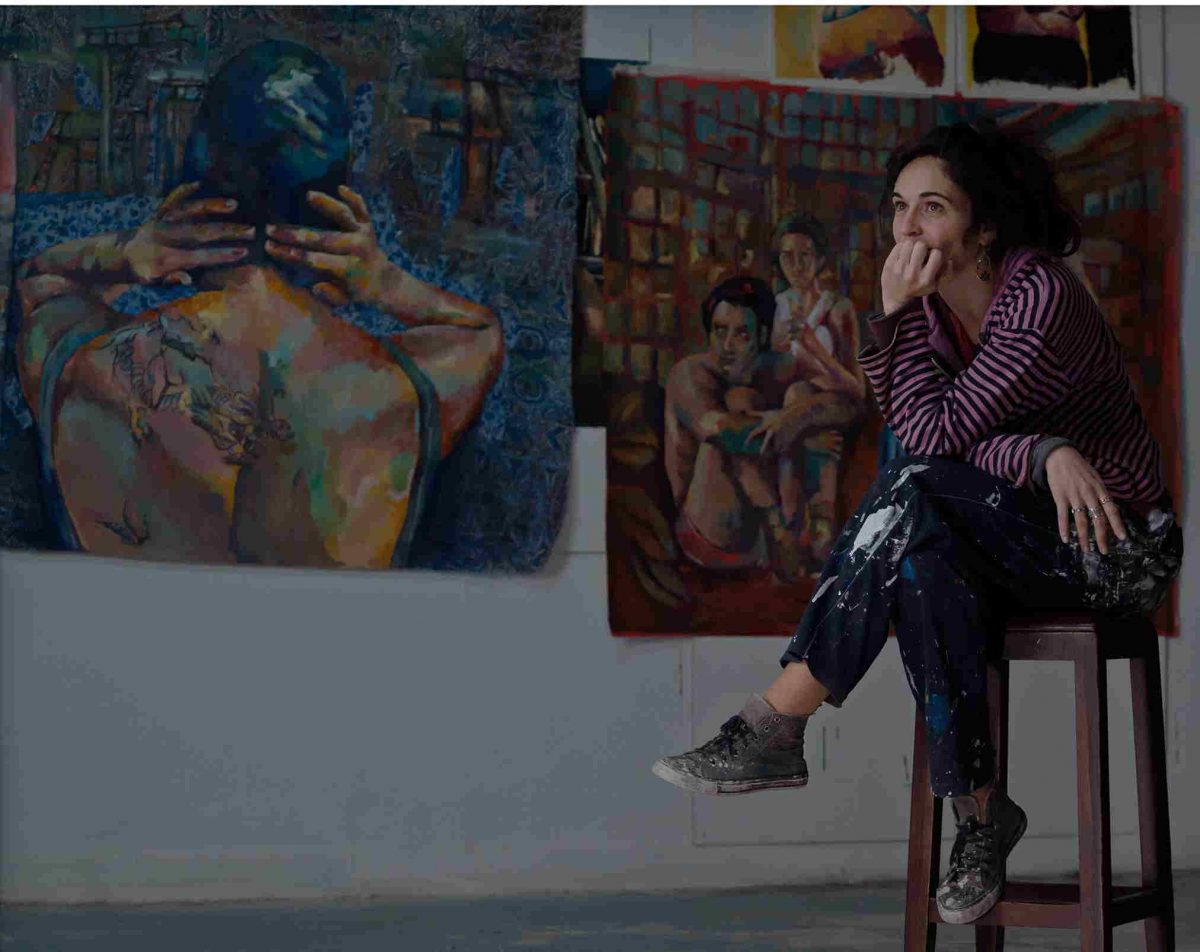The body lends itself to multiple interpretations. Beyond the physical aspect, it has emotional and spiritual facets too. Highlighting this is the ongoing virtual exhibition Not The Whole Body Is Flesh of oil on canvas paintings (from 2016 to 2020) by the well-known Portugal-based artist Daniela Reis. A Master of Fine Arts in Painting, University of Lisbon’s Faculty of Fine Arts, she is the official painter of the former and the current president of the Portuguese Red Cross, Dr. Francisco George and Dr. Luis Barbosa.
The title is inspired by the lines of David Mourão-Ferreira, a Portuguese poet. “He says ‘Not the whole body is flesh, it is also water, earth, wind, fire…’ I am interested in this understanding of the body as a space of possibility, of relationship with nature, with space, with the other and with a metaphorical dimension of existence,” explains Reis.
Aesthetic appeal
The works are all eye catching – finely etched and in fetching hues – engaging viewers’ immediate attention and senses, having a universal appeal. Reis feels that aesthetic experience is not a prisoner of the concrete situation in which one finds oneself, either geographically or culturally. “An attitude of commitment and deep listening is necessary, both from the artist's voice and from the voice of the user, wherever they are,” she observes for why the images will connect viewers worldover.

Taboo
Like all good artists, Reis’s works lend themselves to more than one interpretation. In Taboo, a girl is blindfolded and wrapped with a white cloth. “It is exactly that and reflects on the sacrifices that must be made in order to be happy. On the other hand, it is a domestic scene in which one woman seems to help another to get ready, an intimate, affectionate scene.”
Going beyond mirror reflection
Likewise, Polar Night represents the paradox of identity. “It creates another image that gives us back the look, it creates another one, in this case it creates two others. For some this other presented in the mirror is more true."

Polar Night
Mirroring life
Some artworks convey how real life affects artworks. Through The Skin portrays a woman’s back with a prominent tatoo on it. “The inscriptions could have different origins and meanings. Some are chosen, others are marks left by life and time. Many represent rites of passage, exorcism and are memorials that allow us to recognize the path already crossed, endowing us with courage for future struggles,” she clarifies.
Delineating futher, she adds, “Some are anchors that help those who use them to recognize themselves, to feel more concrete while others inflicted from the outside to the inside become entrenched within the hosts and can completely dominate them.”

Through the skin
Predominance of female figures
Viewers are bound to perceive the predominance of female figures in Reis’s show. Denying a female or male art, she reveals that she was raised by her mother and grandmother. “Their stories and lives have always surprised me by the way they posed and revealed some stereotypes associated with women. It is by their example that I have always been interested in ideas associated with gender, in the complicity shared between women, by the body itself and in its representation.”
Citing examples, she adds, “in ‘Dance 1, 2 and 3’, the female appears vulnerable and in delight, listening to an inner song while the older woman leaning over a younger one in ‘Untitled’ could be an intimate gesure of advice or reprimand.”
Connect with nature
The connect Reis shares with nature’s elements and environment is evident in her works. The Genesis of Everything and Hidden Life, water and its drops are obvious. “In these, natural elements are present directly and also in a more metaphorical way in the very rhythm the images suggest and the emtions they present,” she avers.


The Genesis of Everything
Closeness to vegetation is conspicious in Tiare, Aranyani and Hitiaa. “The represented figures appear wrapped in natural elements, almost as if they themselves were elements of the natural world,” she says. “Animals and vegetation are an important part of my paintings,” Reis discloses. Thus we have She Wolf and three Untitled ones illustrating wolfs.

Tiare
On being asked what triggers her creativity, Reis says, “a painting can start in a book, in a combination of colours, in a glass on the floor or in an experience that questions me. There are always issues and questions in this dialogue and I’m always surprised by the urgency to paint and in general it is not a calm and peaceful process.” Adding that she doesn’t do sketches and never knows when the painting will be finished she reveals, “it is usually the painting itself that ‘asks’ for a certain colour or character and it is only when reaching the end that I begin to understand what the question was.”
The show organised by India International Centre, New Delhi in collaboration with the Portuguese Embassy Cultural Centre, is on till February 14.




















